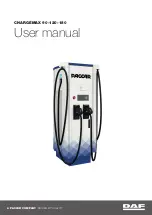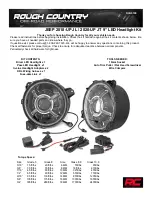
Ford Motor Company produces a towing manual for all authorized tow
truck operators. Have your tow truck operator refer to this manual for
proper hook-up and towing procedures for your vehicle.
It is acceptable to have your two-wheel drive vehicle towed with the
front wheels on the ground (without dollies) and the rear wheels off the
ground.
We recommend towing a four-wheel drive vehicle with all wheels off the
ground, such as using a wheel lift and dollies or flatbed equipment.
TOWING THE VEHICLE ON FOUR WHEELS
Emergency Towing
If your vehicle becomes inoperable (without access to wheel dollies,
car-hauling trailer, or flatbed transport vehicle), it can be flat-towed (all
wheels on the ground, regardless of the powertrain and transmission
configuration) under the following conditions:
•
Your vehicle is facing forward for towing in a forward direction.
•
Place the transmission in position
N.
See
Automatic transmission
in
the
Transmission
chapter if you cannot move the transmission into
N.
•
Maximum speed is 35 mph (56 km/h).
•
Maximum distance is 50 miles (80 kilometers).
Recreational Towing
Note:
Put your climate control system in recirculated air mode to
prevent exhaust fumes from entering your vehicle. See the
Climate
Control
chapter.
Follow these guidelines if you have a need for recreational towing, such
as towing your vehicle behind a motorhome. We designed these
guidelines to prevent damage to your transmission.
Do not tow your vehicle with any wheels on the ground as transmission
or vehicle damage may occur. It is recommended to tow your vehicle
with all four (4) wheels off the ground, such as when using a car-hauling
trailer. Otherwise, you cannot tow your vehicle. See an authorized dealer
if you must flat-tow a vehicle equipped with the Control Trac®
four–wheel drive system.
270
Towing
2013 Expedition
(exd)
Owners Guide gf, 3rd Printing, April 2013
USA
(fus)
















































